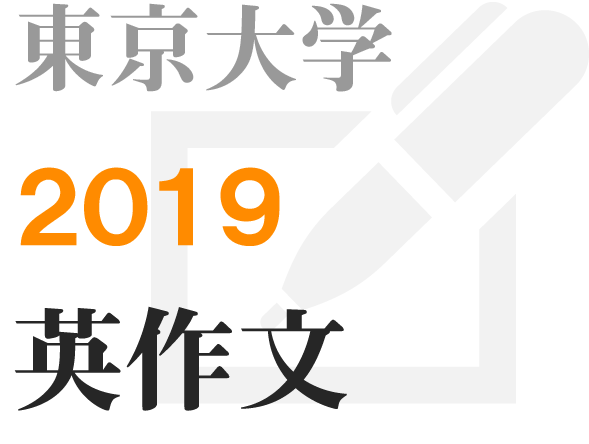【東大2019年問題1-A 英文要約】
以下の英文を読み,ヨーロッパで生じたとされる変化の内容を 70~80字の日本語で要約せよ。句読点も字数に含める。
In pre-industrial Europe, child labor was a widespread phenomenon and a significant part of the economic system. Until and during the nineteenth century, children beyond six years of age were required to contribute to society according to their abilities. From about the age of seven, they began a slow entry into the world of work, a world inhabited by both adults and children. The concepts of education, schooling, and protection against hazards were rare or entirely absent. In the early nineteenth century, children were also mostly viewed as the personal property of their parents, with few or no legal rights. Parents, mainly fathers, were given unlimited power and control over them and were allowed to treat them as they wished; physical punishment was almost universal and socially accepted.
This situation began to change as the nineteenth century progressed. Particularly in the half-century from 1870 to 1920, the rights of children in relation to parents, employers, and others expanded in the form of legal protection. Gradually, children began to be perceived as a separate category and not simply as the property of adults. The view that children have no more than economic value began to change and be replaced by the perception that they are a unique group that society has the responsibility to support and protect from the various dangers they face.
Another change in this period was the protection of children from parental abuse and neglect, which were subjected to intense scrutiny and challenged increasingly by government authorities. In 1889, both France and Great Britain passed laws against cruelty to children, including that caused by their parents. The nation became the defender of children's rights. The child's right to protection then led to the right to provision of various sorts, with the national government responsible for providing services. Health care, acceptable housing, and playgrounds - together with freedom from work and access to public schooling - emerged as elements of children's rights.
Children's Rights and Social Work. Hanita Kosher. 2017.
【東大2019年問題1-A 解答】
産業化以前、児童労働は社会現象で、子供は個人の所有物で法的保護はなかった。19世紀末には子供と大人は区別され、残虐行為も含めて法的に保護すべき対象となった。(78文字)
【東大2019年問題1-A 解説】
【文章解説】
ヨーロッパでの子供の社会的な位置付について、歴史に沿って解説した文章です。産業化以前には、子供は法的には大人の所有物で、経済的には労働力でした。第1次産業中心の社会では、子供は労働力として重宝されます。子供への体罰は当然のものとされ、大人と区別して子供を保護すべきという発想はあまりありませんでした。しかし、1870年から1920年の半世紀にかけて、子供が独自の存在であり、保護すべき対象であるとして、社会変化が訪れます。1889年には、フランスとイギリスが子供への残虐行為を法規制しましたが、そこには両親から子供への体罰も含まれていました。子供への国家保護政策として、医療福祉・住宅補助・公園遊具・公教育が整備され、児童の基本的な権利と考えられるようになりました。近年の日本では児童虐待の件数が増加傾向にあり、あらためて歴史のなかでの子供像を確認してきたいです。
【要約テクニック 時系列を読み取る】
産業化以前では、児童労働は社会現象だった。
In pre-industrial Europe, child labor was a widespread phenomenon and a significant part of the economic system
19世紀末から20世紀初頭にかけて、子供の権利保護が拡張される。
from 1870 to 1920, the rights of children in relation to parents, employers, and others expanded in the form of legal protection.
1889年には児童虐待が規制される。
In 1889, both France and Great Britain passed laws against cruelty to children.
【要約テクニック 変化を読み取る】
子供は個人の所有物で、法的保護が与えられなかった。
children were also mostly viewed as the personal property of their parents, with few or no legal rights
子供は大人の所有物ではなく区別された社会集団となる。
children began to be perceived as a separate category and not simply as the property of adults
子供の権利を国家が保護するようになる。
The nation became the defender of children's rights
【要約テクニック 短文を並べる】
産業化以前では、児童労働は社会現象だった。子供は個人の所有物で、法的保護が与えられなかった。
19世紀末から20世紀初頭にかけて、子供の権利保護が拡張される。子供は大人の所有物ではなく区別された社会集団となる。
子供への残虐行為も規制対象となった。子供の権利を国家が保護するようになる。
【要約テクニック 文章を整理して文字数を調整する】
産業化以前、児童労働は社会現象で、子供は個人の所有物で法的保護はなかった。19世紀末には子供と大人は区別され、残虐行為も含めて法的に保護すべき対象となった。(78文字)
【参考文献】
Children's Rights and Social Work. Hanita Kosher. 2017.


【問題1-A 全訳】
産業革命以前のヨーロッパでは、児童労働は広く行き渡った現象で、経済制度の重要な一部分だった。 19世紀までは、6才以上の子どもたちは、能力に応じて社会に貢献することが求められていた。およそ7歳から、彼らは仕事の世界、つまり大人と子供の両方が住む世界へ、ゆっくりと参画していった。教育・学校・補導の概念はまれであるか、まったくなかった。19世紀初頭では、また子どもは、両親の私有財産と見なされ、法的権利をほぼあるいはまったく、持たなかった。両親、主に父親は、無制限の管理権力を与えられ、思い通りに扱うことが許可された。体罰はほぼ普遍的で、社会に受け入れられていた。
この状況は、19世紀が進むにつれて、変化し始めた。特に1870年から1920年までの半世紀で、両親・雇用主・その他に対する子供の権利は、法的保護の形で拡大した。徐々に、子どもたちは大人の財産としてではなく、別分類として認識されるようになった。子どもたちは経済的価値しかないという見方が変わり始め、彼らは独自の集団で、子どもたちが出会うさまざまな危険を、社会は保護支援する責任があるとの見方に置きかえられた。
この期間における別の変化は、親の虐待と育児放棄から、子どもを保護することで、厳しい監視があり、政府によってますます対抗措置が取られていった。 1889年に、フランスとイギリスの両方が、両親からも含めて、子どもへの残虐行為に反対する法律を可決した。国家は子どもの権利の擁護者となった。子どもの保護の権利は、その後、さまざまな受給権利につながり、支援提供する責任は政府にあった。医療保障・公的住宅・公園は、労働からの自由・公教育への参加と合わさり、子どもの権利の要素として浮上した。



質問と回答